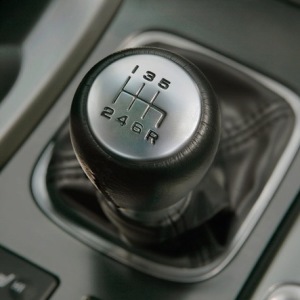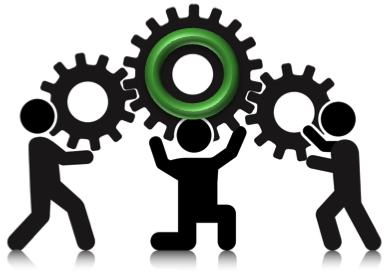 Learning to grow a company is a lot like driving a 5 speed vehicle. What gets you started isn’t what gets you to top speed.
Learning to grow a company is a lot like driving a 5 speed vehicle. What gets you started isn’t what gets you to top speed.
1st Gear
Getting started is the hardest part of driving an automatic vehicle. You have to release the clutch just enough to match the pressure on the gas before you get moving.
Starting is hard because you have to have some preparation. But too much will leave you just sitting there. At some point, you have to stop preparing and start doing. First gear is your Minimally Viable Product or Service (MVP), your first try for customers. Some people spend hours in parking lots practicing and practicing before they ever venture out on the road. Others are thrown into the fire and have to figure it out as they go. Neither is right or wrong, just two ways of learning.
If you don’t give it enough gas, you’re going to sputter out when the light turns green. A line of cars honking at you can feel embarrassing. But many of the drivers behind you can’t even drive a stick-shift, they are mocking something they often don’t understand.
The same goes for your business. Most people have never tried to start their own business, so they don’t understand what goes into it. It can feel embarrassing when you fail, but those are learning experiences. When you first start a business, you’ll make lots of mistakes. But making mistakes teaches us lessons that most likely wouldn’t stick had they been done right the first time.
It’s hard to learn about the mesh point of clutch and gas pedals until you’ve done it wrong a few times. But once you find that sweet spot, you know what to look for.
2nd Gear
Once you’re rolling, and you avoided stalling out, everything is good!
You feel confident, you feel accomplished, and you have the wide open road to look forward to. Now you can get where you’re going at 12 mph, but most of you don’t want to drive that speed the entire way.

When shifting to 2nd gear, some of the same lessons of first gear apply. You probably won’t stall out from 1st to 2nd. However, it may be a rough transition and there’s still a good chance of problems.
Tons of businesses have difficulties (and many fail) as they go into 2nd gear. They don’t know what to do after they’re out of the gates. They find themselves doing everything from making sales, to designing products, to doing deliveries. This is where the gas needs to be pushed harder. We all have a limited bandwidth, it’s called time. As far as I know, we’ve all got the same amount.
2nd gear usually means your first hires. There are typically two routes to take as your business grows:
A.) Hire out a specific job or segment of the business. This can be cheap like a delivery person or it can skilled like an accountant
B.) Hire out someone to be your right hand and ask them to share the burden of everything
If you choose A, be prepared to become the Linchpin of your company, but not necessarily in a good way. The more you hire like this, the more important you become. Which means you have ultimate control. But it also means your business won’t run without you. Bye bye vacations…
If you choose B, you’ll have to give up some of the important tasks (aka responsibility) to that right hand person. And you’ll probably have to pay them better than an hourly delivery driver. However, you’ll have more peace of mind from making a better hire that is able to help solve more of the businesses problems.
Whichever route you choose, your momentum will pick up and your vehicle will be gaining speed! But at some point, it will be capped.
3rd Gear
Again, some of the same principles apply when shifting gears, but you still need to push the gas. In terms of a company, your core business doesn’t have to change. If you sell barstools, you’ll probably still be selling barstools. The “shifts” come on the operational side.
This is where tons of your driving is done. Coincidentally, this is where most businesses remain.
Additional hires are needed. This is often where the counterpart of your first hire (A or B) comes into the picture. If you hired a right hand, it’s time to hire some hourly people or outsource something that’s a headache. If you’ve only hired out certain segments, it’s time to hire someone that can help you do it all.
Again, a common mistake is to become the bottleneck of your business, so be cautious about hiring. You’ll continue to gain speed, and this is an exciting time in the business. Culture is forming and new things are happening every day! But what’s next confuses many business owners.
 4th Gear
4th Gear
By now, you’ve recognized that a gear change is needed. But you’re comfortable, and you don’t know how long you’ll be at that elevated speed. So you stretch 3rd Gear, instead of changing to 4th, even if it’s just for a while.
4th Gear is where the business becomes more efficient. Widening the sales funnel, saving money on the delivery process, improving the accounting systems. Some of these things may not add customers or revenue, but they boost profits by limiting expenses and/or saving time.
In my opinion, this is the biggest missed opportunity for most businesses. They get stuck in 2nd or 3rd Gear and never look under their noses for ways to become more efficient.
Down-shifting
Some people don’t know how to do this at all, they just slam on the brakes or semi-press the clutch. Both of which aren’t good for the vehicle, nor for the business.
Slamming on the brakes may be a mass firing or a division cut, something drastic that can completely change the culture of the company you’ve worked so hard to build.
If you use the clutch too much while you’re braking, you may have to start again in 1st Gear. This isn’t necessary, but it may look like the only option. What most companies should do is down-shift one gear. Instead, some will cut so far back, they lose the profitable parts of their business.
A down-shift can be an employee that leaves and intentionally is not replaced or maybe firing a terrible, time-sucking client. Either way, it may seem like a “loss” on the surface. But instead of taking drastic action, the business leans into it and takes a simple step back to regain it’s composure before going back into 4th.
5th Gear
After getting back to 4th, some organizations may choose to push it to 5th Gear. To me, 5th gear is about expansion.
This may look like a new branch, an IPO, or maybe even selling the company off. 5th Gear is top speed and you usually only get to 5th when you’re on the highway. Not all inexperienced drivers get to take the car onto those roads, they have to earn it. It can be dangerous, but it can be fun.
At the same time, some don’t want to experience that open road. They like their business in 3rd or 4th Gear, and they don’t want to sell or venture out to other regions of the business world. There’s nothing wrong with being content in your business. But for some, that’s not enough.
5th Gear is a personal choice that not everyone takes. Then again, so is driving a stick shift or starting a business.
What gear is next for you?
Leave me a comment or chat with me on Twitter, I’d love to hear from you. Have a great week!
—


